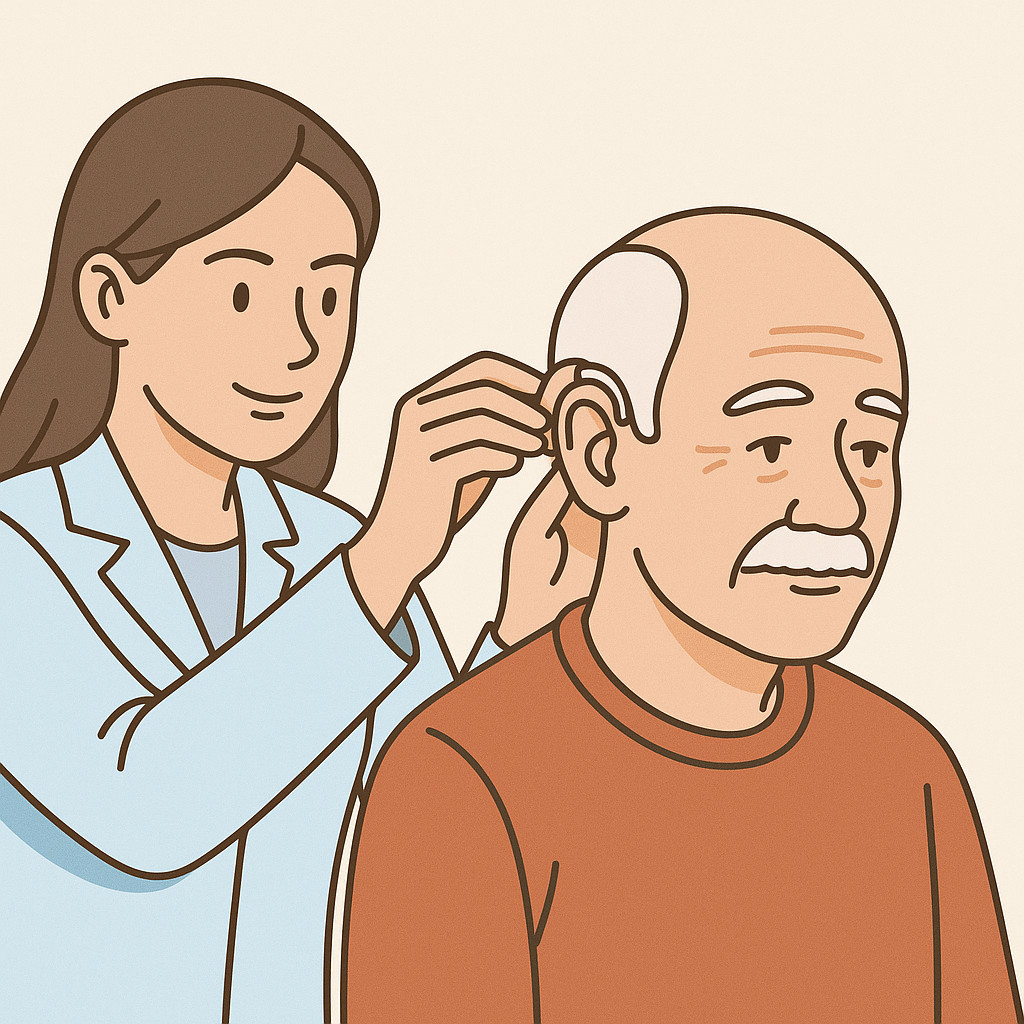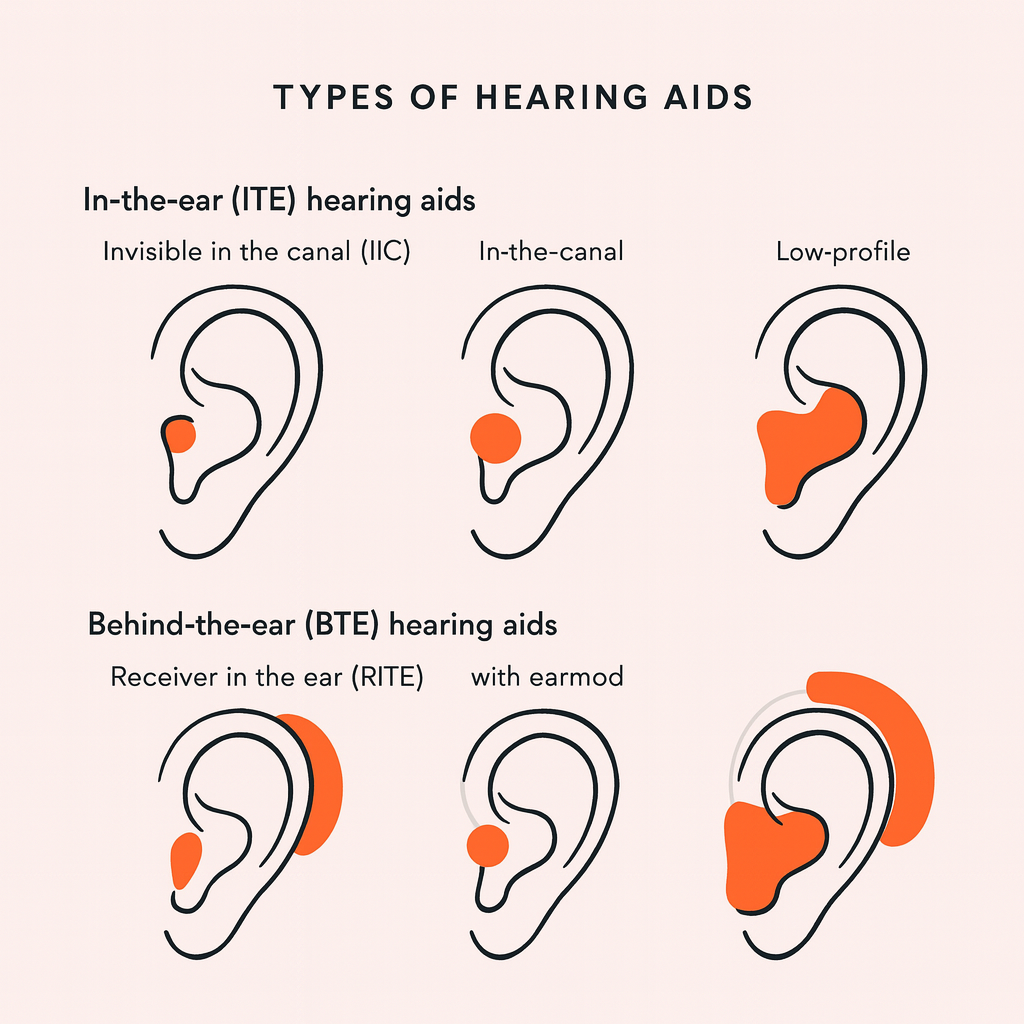Hi, I’m Dr Julius Goh Liang Chye, ENT specialist from PJ and Kuala Lumpur. If you or your loved one is straining to hear, asking people to repeat, or avoiding gatherings because of noise, this guide will help you understand when a hearing aid is recommended, who it’s for, the main types available, and how much it typically costs in Malaysia.
Why a hearing aid is prescribed

A hearing aid is prescribed when hearing loss starts to affect daily life—conversation at home or work, hearing the doorbell or traffic, or enjoying TV and music. In adults, guidelines recommend offering hearing aids when hearing loss impacts communication; if both ears are aidable, two hearing aids are usually advised for better speech understanding and sound localisation.
Treating hearing loss also supports overall health. Large studies show regular hearing-aid use is associated with lower mortality risk, and for older adults at higher dementia risk, hearing aids slowed cognitive decline in a randomised trial (ACHIEVE). While hearing aids don’t “cure” dementia, they reduce listening effort and help people stay socially and mentally engaged.
The World Health Organization further highlights hearing care as a high-value, cost-effective intervention that improves quality of life worldwide.
When is a hearing aid prescribed?
We consider a hearing aid when:
- You have permanent sensorineural hearing loss (age-related, noise-induced, genetic, etc.) and it affects communication or safety. Offer two aids if both ears are aidable.
- You have conductive or mixed loss (e.g., chronic ear problems, otosclerosis) not correctable with medication or surgery—then amplification (air-conduction or bone-conduction) can help.
- You have single-sided deafness (SSD) or very asymmetric hearing—special systems (CROS/BiCROS or bone-conduction) can route sound from the poor ear to the better ear.
- Children with permanent hearing loss should be fitted as early as possible to support speech and learning (ideally within the first months after diagnosis).
Who is it prescribed for?
- Adults with mild–profound permanent hearing loss who report difficulty hearing in real-life situations.
- Older adults with age-related hearing loss (presbycusis)—early amplification improves participation and may reduce downstream risks from isolation.
- People with SSD/asymmetry (CROS/BiCROS) and patients with chronic ear disease or canal malformations(bone-conduction devices).
- Children with permanent hearing loss—fit promptly with paediatric-appropriate devices.
Types of hearing aids (and who they suit)

Air-conduction hearing aids
- BTE (Behind-the-Ear) – robust, suits most severities; common in children.
- RIC/RITE (Receiver-in-Canal/Ear) – small, natural sound, popular for mild–severe loss.
- ITE/ITC/CIC/IIC (custom in-ear) – discreet options for mild–moderate loss; may be fiddly for small ear canals or dexterity issues.
Special configurations
- CROS/BiCROS – for SSD or asymmetrical loss; microphone on the poor ear sends sound to the better ear.
Bone-conduction/implantable options (for ears that can’t use air-conduction well, or SSD)
- Bone-anchored hearing devices (surgical or magnet/softband) transmit sound through skull bone—useful in canal atresia, chronic ear discharge, mixed loss, or SSD. (These are prescribed via ENT/audiology assessment.)
Modern features to discuss with your audiologist: rechargeability, Bluetooth streaming, directional microphones, noise reduction, tinnitus programs, waterproofing, telecoil for loops, and smartphone app control. (Feature sets vary by model/brand.)
Estimated One sided hearing-aid costs in Malaysia (per ear, 2025)
Prices vary by technology level, features, brand, after-care package and warranty. Typical private-sector ranges I see locally:
- Entry/basic: ~RM1,800–RM3,500
- Mid-range: ~RM3,500–RM7,000
- Advanced: ~RM7,000–RM12,000
- Premium: ~RM12,000–RM19,500
These ballpark figures align with published Malaysian provider ranges (examples: RM1,800–RM14,000; RM2,500–RM19,500; RM2,700–RM19,000). Always confirm what’s included (fitting, follow-ups, REM, domes/earmould, charger, warranty).
Can Malaysians get financial help?
Yes—depending on eligibility and employment status:
- PeKa B40 (ProtectHealth/KKM): Medical Device Aid up to RM20,000, which includes hearing aids for eligible B40 recipients.
- JPA (for public servants): guidance notes show approval pathways and unit price ceilings (e.g., RM3,500 per unit without higher-level approval); ENT confirmation is required.
- Tabung Bantuan Perubatan (TBP), JKM, Baitulmal/Zakat: used by MOH hospitals to fund hearing aids according to internal policy/protocol.
- PERKESO/SOCSO: under Employment Injury Scheme/rehabilitation, hearing aids may be provided when hearing loss is work-related and criteria are met.
Tip: Bring your audiogram, ENT letter (if any), and OKU card (if applicable) when enquiring. Hospital audiology units can advise on the right route for applications.
What to expect from the fitting process
A good fitting includes history, otoscopy, pure-tone audiogram, needs assessment, choice of style, and verification (e.g., real-ear measures) plus follow-up at 6–12 weeks to fine-tune. Two aids are discussed if both ears are aidable.
When to see an ENT urgently (don’t wait)
- Sudden hearing loss in one or both ears within the last 30 days – seek same-day/24-hour ENT or Emergency assessment.
- Rapidly worsening hearing (over 4–90 days) – urgent ENT within 2 weeks.
- Hearing loss with facial weakness, persistent one-sided tinnitus, recurrent vertigo, chronic ear discharge/pain, or marked asymmetry—please get assessed.
Subtle call-to-action
If you’re noticing hearing changes or constantly turning up the TV, don’t wait—early intervention can make a significant difference. For personalised advice on testing, funding options, or the best devices tailored to your lifestyle, book an assessment with our expert ear specialist in KL today. Our ENT clinic will help you hear better, live better!
References & further reading
- NICE Guideline NG98: Hearing loss in adults – assessment and management (updated 2 Oct 2023).
- WHO: World Report on Hearing (2021).
- Lin FR et al., The Lancet (ACHIEVE Trial, 2023): Hearing intervention and cognitive decline.
- Choi JS et al., The Lancet Healthy Longevity (2024): Hearing-aid use and mortality.
- NHS: Hearing aids and implants (types including CROS/BiCROS).
- Bone-anchored hearing devices policy/overview.
- Malaysian pricing examples: Hearing Partners, SoundLife, Clarisound.
- Funding: PeKa B40 (ProtectHealth/KKM), JPA guidance, MOH policies, PERKESO.


Comments are closed